#Animal Health
Text
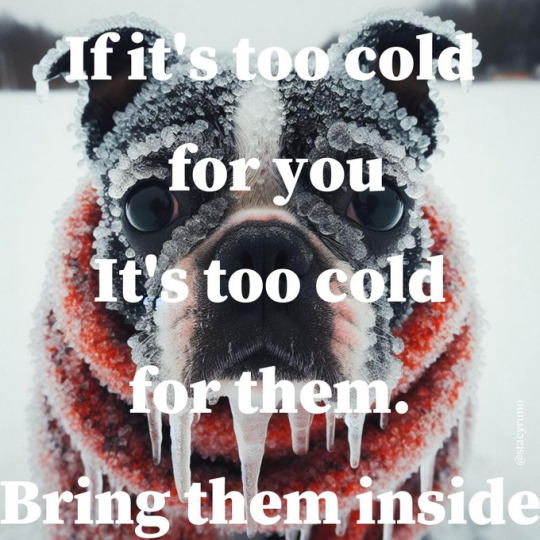
#pets#puppies#puppy#pupper#animals#furbaby#dog#dogs#doggo#animal welfare#animal safety#animal health#Boston#boston terrier#bostons#boston terrier puppy#baby boston
266 notes
·
View notes
Text
dont forget the innocent animals and wildlife of gaza. they’re dying and need help too and we should speak up more about them and help them and get aid to them.
all of the bombs and weapons are damaging the environment and nature a lot more aswell which also needs help.
permanent ceasefire now. free palestine. save the animals, the environment and the people. 🇵🇸
(pls reblog and boost to get the message out to more people bc this is extremely important /nf)
#palestine#free palestine#ceasefire#ceasefire now#free gaza#gaza strip#gaza#animals#save the animals#animal welfare#wildlife#animal#nature#free palestine 🇵🇸#from the river to the sea 🇵🇸#animal rescue#animal rights#for reach mainly#animal health#veterinary#animal science#important#pls reblog#pls repost#pls boost#signal boost#climate change#climate crisis#climate activism#climate action
86 notes
·
View notes
Text
Bird Flu in Raw Cow Milk Has Killed Farm Cats in a Concerning First
Like Bookmark Share
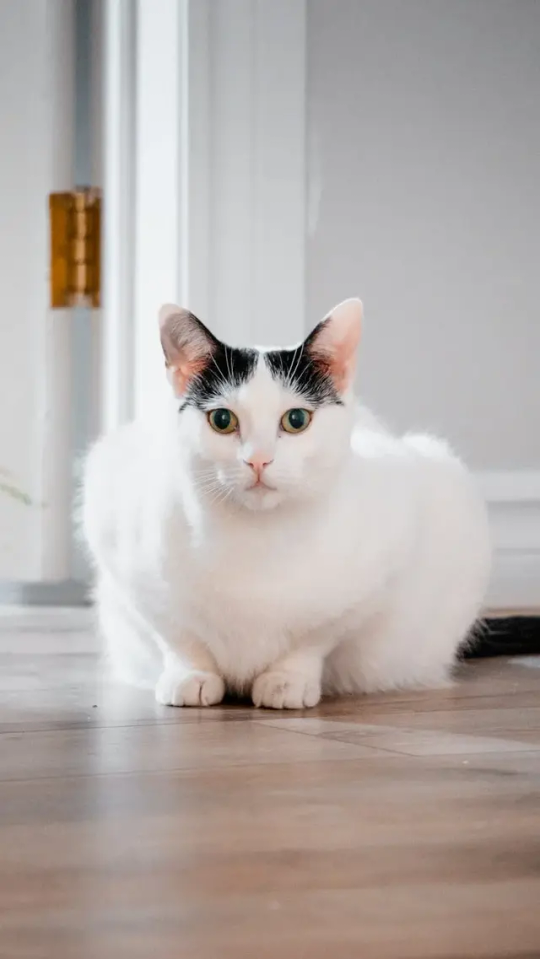
In recent news, a concerning development has emerged in the realm of animal health: the discovery of bird flu in raw cow milk, resulting in the tragic death of farm cats. This alarming incident sheds light on the potential dangers posed by avian influenza, not only to poultry but also to other animals and even humans.
#cat#animals#mental health#animal health#raw-caw-milk#cats#kitty#kitten#kittens#baby animals#aww#cute#lol#funny#wholesome#cat lovers#caturday#justcatposts
20 notes
·
View notes
Text
https://gofund.me/494d9623
#free palestine#free gaza#palestine#gaza#from the river to the sea palestine will be free#current events#donations#children#family in need#human rights#cat person#cats#animal health#pet health#currents events#support palestine
21 notes
·
View notes
Text

EDIT: the situation was worse than predicted, and the egg had herniated out. the only corrective option was a high risk, expensive surgery done by a vet who had never performed the procedure. it was very likely she would have died from that, or in recovery, and the condition was fatal anyways. Without any other options, I chose to humanely euthanize her and asked for her ashes.
Long story short: one of my beloved cockatiels, Pikachu, is both eggbound ( life threatening ) and has a hernia ( not currently life threatening but can be and needs to be fixed with surgery. Currently, I am focused on fixing her egg binding, as it is a time sensitive condition. I don't own a car, so I rely on rideshare services to get me to and from places.
A round trip to this vet is ~$100
The exam fee STARTS at $130 and goes up
Unfortunately, egg binding requires anesthesia to deal with, which is extremely high risk for birds. Even healthy birds can die while under anesthesia during a non-invasive procedure. Since I cannot currently guarantee her survival until surgery, I am ONLY looking for commissions to cover the expected $300-$400 cost of the emergency vet visit. I understand my pets are my responsibility, but I would greatly appreciate any assistance in getting her the care she needs. If you can't help, thank you for taking the time to read anyways.
KO-FI
PORTFOLIO
𝗜𝗙 𝗞𝗢𝗙𝗜 𝗖𝟬𝗠𝗜𝗦𝗦𝗜𝗢𝗡𝗦 𝗔𝗥𝗘 𝗖𝗟𝗢𝗦𝗘𝗗:
I have enough commissions + donos and am trying to prevent overwhelming myself! Thank you for your help and support!
17 notes
·
View notes
Text
This morning there was an accident and Billy was pretty badly injured. She is home now after a visit to the ER vet and seems somewhat stable, but she is going to need her hind leg amputated and right now I'm just focusing on getting her through the next few days until the surgery can be scheduled.
I will update when I know more. Hoping things will be okay.
#bunblr#bunnies#adoptdontshop#rabbits#house rabbit#rescue rabbit#bunnies of tumblr#billybun#animal health#bunny med
18 notes
·
View notes
Text
This is your time little guy, Happy October!

Wedgewood Pharmacy sends out stickers with pet refills and this was inspired by one of them! Thank you so much to the original artist (unknown to me) for bringing such a cute and wonderful creature into the world! I smile everytime I see it.

Some practice free hand 'drawing' with watercolor (and gouache for the eyes to really make them pop). :)
#cats#caturday#catblr#art#artists on tumblr#my art#watercolor#watercolour#illustration#painting#traditional art#illustrations#animal health#pets
32 notes
·
View notes
Text


It’s not easy to swim 175 km (109 mi.) when you’re starving to death. It’s not easy either to try to survive when you’re shedding body weight at a rate of 1 kg (2.2 lbs.) a day.
And it might be hardest — or at least most tragic — of all if you’re a nursing mom and your calorie intake has dropped so low that you can no longer produce the milk you need to care for your young.
As a new paper in Nature Communications reveals, all of those challenges and more are facing the world’s polar bears, thanks to vanishing sea ice in our warming world, denying the animals a platform that they need to hunt for seals.
If the trend isn’t reversed soon, the estimated 26,000 polar bears in the wild could start to lose their hold on survival before the middle of this century.
The researchers were less interested in establishing the fact of the bears’ food plight; scientists are already aware of that problem.
What they were more focused on learning was both how gravely the nutritional loss is affecting the animals’ health and the alternative food sources they’re scrounging for on land.
To do their work, the scientists followed 20 different polar bears in Manitoba, Canada, from 2019 to 2022, fitting them with GPS trackers and video collars and periodically tranquilizing them and analyzing their blood, body mass, daily energy expenditure — basically a measure of calories coming in versus calories going out — and more.
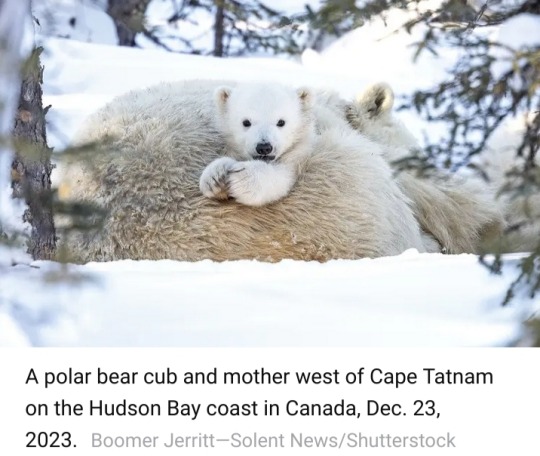
“The polar bears in Hudson Bay [Canada] are probably at the edge of the range at which they can survive right now,” says Anthony Pagano, a research biologist with the U.S. Geological Survey and the lead author of the paper.
“Most of the modeling work suggests that around 2050, they are going to be on land and away from their primary habitat [on the ice].”
The contraction in range of the Hudson Bay community is likely to be reflected in the ranges of the 18 other polar bear subpopulations scattered throughout the Arctic as well.
Across the arc of the study, the data Pagano and his colleagues gathered was troubling.
Weight loss varied from bear to bear, with the daily loss of 1 kg representing just an average.
Some of the subject animals dropped up to 1.7 kg (3.75 lbs) every 24 hours.
That may not seem like much when an adult male polar bear can tip the scales at 550 kg (1,200 lbs) and a female at 320 kg (700 lbs), but it can add up fast.
And with less available to eat, the hungry bears have to travel farther and farther distances to find their next meal.

The individual that swam 175 km — a young female — set the record among the bears studied, but another, older female also covered 120 km (75 mi).
The endurance swims in search of food are energy-intensive and often fruitless for the bears.
They are efficient hunters when they’ve got the purchase of ice beneath them, Pagano and his colleagues explain, but they are clumsy when they are going after seals and trying to swim at the same time.
That leaves them scavenging on land for foods they would not ordinarily eat — and getting little payoff for their efforts.
“Polar bears are feeding on ducks and geese — catching them when they’re flightless and molting — as well as on their eggs,” Pagano says.
Other foods on the desperate bears’ menus included berries and other vegetation, bones, antlers and, in one case, a beluga whale carcass.
None of that fare is as calorie-rich as a steady diet of live, blubber-packed seals.
Some of the bears vigorously sought out these alternative sources of nutrition; others opted for a different strategy: resting and conserving the energy contained in their body mass.
The latter approach costs stored calories, but so does the former, as all of the plodding and searching burns through energy too.
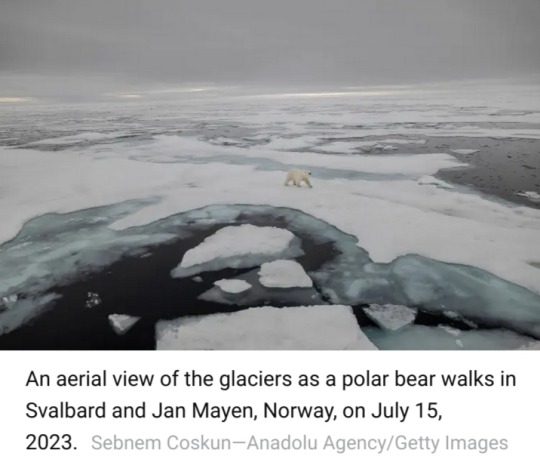
“The amount of body tissue they were burning to try and find those terrestrial foods was basically the same as what they’d get from eating those terrestrial foods,” Pagano says. “So there’s no actual benefit.”
The researchers were surprised to find that the bears were going through not just fat stores to compensate for the poor rations but lean muscle tissue too.
Pagano is not certain why their metabolisms would adopt that strategy, but he has some ideas.
“There's some thought that burning lean body mass might be more energetically efficient in some respects relative to burning body fats,” he says.
“Also, conserving their body fat might provide them better thermal regulation once the winter and the ice return.”
That seasonal freeze-over is shorter than it used to be — though not by a lot.

In the 1980s, polar bears were on land for about 110 days out of the year, with no need to eat terrestrial foods since the fat deposits they’d accumulate thanks to wintertime seal-hunting was enough to carry them the rest of the year.
Now they're off the ice for 130 days on average.
It’s a measure of the nutritional knife’s-edge on which the bears operate that just 20 days can make the difference between whether they live and thrive or starve and die.
The individuals most likely to perish when food supplies are poor are young adults — due to their less-developed hunting skills — and cubs, whose principal source of nutrition, their mother’s milk, can vanish in lean times.
“If females are fasting for extended periods, they will actually stop lactating,” says Pagano.
Full-grown bears are by no means immune to danger, however.
The authors cite earlier research predicting that the adult male population could decrease by 24% if the ice-free summer season increases to 180 days.
This is especially so given the enormous energy intake — about 22,500 calories per day — that the big males need to maintain their body weight.
Polar bears aren’t the only species menaced by these findings. Humans are in harm’s way too.
The more time bears spend off the ice and on land, the greater the likelihood they will wander into cities and towns in search of something to eat — and residents could easily be hurt or attacked if they get in the way of the hungry animals.
People might also even be seen as sources of prey.
“When polar bears are on land, they act like other bears and become omnivores,” says Pagano. “It does raise the potential for human-bear interactions.”
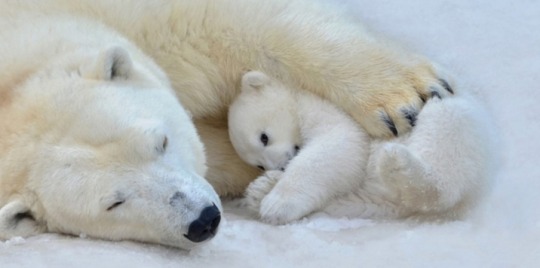

🆘🐻❄️🥺
#polar bears#sea bears#Ursus maritimus#U.S. Geological Survey#Manitoba#Canada#Nature Communications#climate change#wildlife conservation#food source#nutritional loss#animal health#marine mammals#Arctic Circle
11 notes
·
View notes
Text
IMPORTANT!!!!!
Please help me get my sweet Queen Athena Beana to the vet!
If you can't donate, could you please reblog?
I am disabled and have a broken foot at the moment, please please please help if you can! She is everything to me
28 notes
·
View notes
Text
It's soooo rewarding when a traumatized animal fully trusts you after some time.
4 notes
·
View notes
Photo

#pets#puppies#puppy#pupper#animals#furbaby#dog#dogs#doggo#pet health#pet first aid#pet emergency#important#animal welfare#animal safety#animal health
27 notes
·
View notes
Text
Bunblr Illinois! RHDV is popping up more here. There are multiple vaccines available if you haven't gotten your rabbit vaxxed. Wikipedia, USDA
#bunny#rabbit#bunnies#bunblr#rabbits#vaccines#animal safety#veterinarian#animal health#pets#rabbits of tumblr
24 notes
·
View notes
Text
Hey, hi, it’s me! Your local dog groomer! You want a double coated dog? You want to get that dog haircuts? (Or cats. Cats deal with all this too)
Here’s my awesome gaming tip:
DON’T FUCKING SHAVE THEM!!!
Double coated breeds, most commonly associated with shedding, are not a breed you want to shave!!!
But Collie? Why shouldn’t I shave my dog?
Wonderful question! The answer lies in the land of ~insulation~
Double coats are actually a form of insulation! They’re designed to protect your dog from any kind of the elements! They grow a thicker undercoat during colder months to allow heat to be held close to the skin! They shed that fur in warmer weather, and it actually holds cool air instead of making your dog overheat!
If you shave that coat? It can cause shave shock- a condition that causes your dogs skin to get red and irritated, which can lead your dog to get open sores and scabs. It can also cause hair thinning and hair loss as shaving your double coated breed too close to the skin can clog and damage their hair follicles. This can also lead to secondary infections.
Wow! That sounds bad! But what should I do instead of shaving my dog?
If your local salon offers it? Go for a shed release bath. I most often see breeds in here that just want their dog to stop shedding and think shaving is the answer. Groomers (and some stores if you prefer to self wash) have shampoos that target that undercoat, allowing it to be removed easier! Yes, you have to brush your dog, but you should be doing that anyways
My dog has longer hair and on occasion gets matting! Should I not shave those out?
Aha! This is the exception! While it is still a better idea to try and brush the mat out if it’s loose enough, most of the time it’s a better to spot shave matting out. ONLY IN THAT AREA. It’s better to get rid of matting as soon as possible.
I understand if brushing gets away from you, wrangling dogs is a very draining task, some dogs just mat if you look at them wrong! They happen! I’m not about to shame anyone for that.
I also understand if you prefer a cleaner look on your dog, if you want to get them a haircut? Get a feather trim, ask for it to be tight, they’ll take care of the hair on the legs and round up the butt and cut the hair on the stomach to meet the body- just don’t shave your dog!!!!!!!!!
A list of these dogs I see most commonly getting shaved are:
Golden retrievers! (They are not a doodle. You have to shave doodles because of the poodle dna)
Pomeranians! (Yes, they’re double coated. Boos haircut is not the Pomeranian standard.)
All shepherd dogs! (Yes they have long hair. No you shouldn’t shave them.)
Huskies (I get it, they shed so much, but it’s not healthy!)
It genuinely makes me so sad every time I cannot convince a pet parent not to shave their dog. So please do what’s best for your animal!
28 notes
·
View notes
Text
Something for those little potential vets. My dog was playing and their nail fell off. Was able to grab some pics. He's doing totally okay and this is actually the preferred outcome. Having to clip off the nail manually and having to clip into that little quick. Is much more painful than it falling off. These pictures are actually much less graphic because it fell off naturally. There was no blood in the process except for the initial irritation. Still trigger warning for exposed quick and nail. But hopefully the people who are actually looking at this understand what that means.
Below is the pictures.




#tw blood#tw nail#tw flesh#tw animal injury#dog quick#dog nail#veterans#veterinary#vet#animal care#animal health#dog anatomy#animal anatomy
2 notes
·
View notes
Text
I...don’t make posts like this. But I am desperate for help.

This is Piper. Piper is a 7-year-old Domestic shorthair, though she still acts like a kitten most days! She is my baby, and while she isn't officially documented, she acts as my Emotional Support Animal for all my mental health needs. She is an absolute sweetie and I can imagine a day without her now.

^Her eye on 4/16/23 after an allergy episode. This was why we didn’t initially worry.
A little over a month ago, her third eyelid started showing. It was so slight at first that my best friend and I thought it was allergies, as ours were flaring up as well. But as the days turned into weeks, it seemed to just get worse. After some lubricating drops did not work, I took her to the vet and the initial visit resulted in one of two results: An abscess behind her eye, or a tumor. After seeking counsel with an Animal Eye specialist, we got the following diagnosis:
"Piper has signs consistent with Retrobulbar Disease. Retrobulbar Disease most commonly is associated with an infection/inflammation (cellulitis) or a cancer. Less Common causes include retrobulbar foreign body, hemorrhage, cyst, mucocele, myositis, or an ascending tooth root infection. Our goal is to resolve the clinical signs and determine the underlying cause. Based on Piper's eye exam and history, I am most suspicious of a retrobulbar tumor (cancer)."

^This is her eye as of 6/20/23
After discussing the details of the diagnosis with her vet, we determined that Enucleation, or removal of the eye and therefore tumor, is the best option to give her a continued beneficial life. As of now, she does not seem to be experiencing pain, but she has no flinch reflex in that eye, and no reaction to light, which tells the doctors that the mass is pressing against the optic nerve, and thus it would be more beneficial to her to have the eye removed, and a biopsy to be done on the mass to determine if it is aggressive cancer or not.
The amount being asked is to help cover the cost of the procedure, with an itemized estimate attached below.

Any additional funds raised will go toward the vet bills accrued before this surgery. As I work with the school system and it is summer, I am not making enough money for this, and all my credit cards are maxed out from other issues that have happened. I cannot get this procedure done without this money so please, help me give her the life she deserves.
Here is my GoFundMe. (https://gofund.me/96a56fa6) Any help, whether its donations or sharing, would be helpful. I’m so scared of losing her.
21 notes
·
View notes
Text
Optimizing Livestock Health: Feed Activities and Biosecurity Best Practices by Optima Life Sciences

Ensuring maximum health and productivity is crucial in this dynamic world of livestock husbandry. Optima Life Sciences is very well aware of the vital role of biosecurity and feed operations that prevent disease and promote livestock well-being.
We’ll discuss the best practices recommended by Optima Life Sciences in this blog article for maintaining the health of livestock by using efficient feed management and biosecurity procedures.
Some best practices for feed management are:
The proper sources must be chosen when it comes to feed management, according to best practices. Choosing a reliable supplier who maintains a high priority on quality assurance and follows stringent safety guidelines when it comes to feed ingredients. At Optima life Sciences, we stress on how crucial it is to use cutting edge processing methods to get rid of infections without sacrificing vital nutrients in the feed. Every aspect of feed management, from handling cleanliness to storage options, is carefully tuned to reduce the chance of disease transmission.
Some best practices for Biosecurity are:
Biosecurity can play a significant role in the success of a swine operation. The purpose of a biosecurity program is to protect animals from foreign pathogens they have not been exposed to. A biosecurity program helps minimize the impact of illness that are hard to identify. Make sure you are operating with biosecurity in mind when removing culls or mortalities from the herd. A technique such as stage loading could be a possibility for culls. Be cognizant of the contamination risks associated with rendering trucks. Inspect your animals regularly to ensure they are healthy and safe from disease. Vet any new animals before purchasing them to ensure they aren’t bringing disease to your property. Consider identifying an area as a quarantine zone for animals coming onto the farm which can be kept isolated from the other animals.
With the combination of complete biosecurity policies with best practices of feed management, Optima Life Sciences can ensure a comprehensive approach to disease prevention in livestock production. While reducing the effects of disease issues, our customized solutions put animal health, welfare and productivity first. Providing our clients with surveillance networks because we recognize that early diagnosis and reaction to disease outbreak depend on proactive monitoring.
#feed additives for optimal animal nutrition#Optima Life Sciences#liquid dosing systems for precise animal medication#high quality disinfectants for animal facilities#animal health supplements#animal health#Cost-Effective Feed Additives for Performance Solutions#Poultry health support technology in pune#animal health supplements for poultry#poultry feed#Poultry health performance enhancing products in pune#feed milling solutions in pune#high performance solutions in pune#Premium Animal Health & Nutrition Product suppliers in pune#cost effective performance solutions product in maharashtra#Animal health supplements for poultry#Feed additives for optimal animal nutrition#Farm biosecurity solutions#High-quality disinfectants for animal facilities#Comprehensive farm disinfection services#Liquid dosing systems for precise animal medication#Advanced feed supplements for farm animals#biosecurity solutions
2 notes
·
View notes